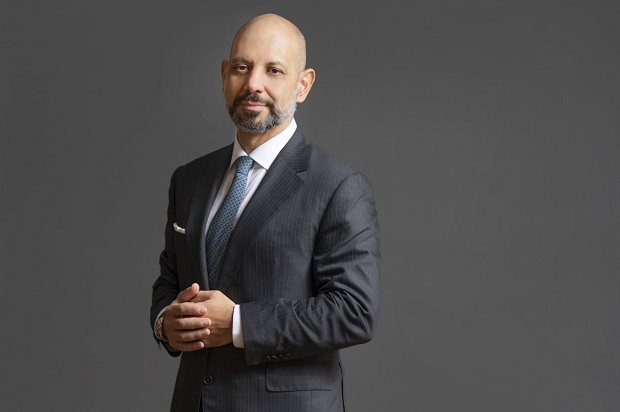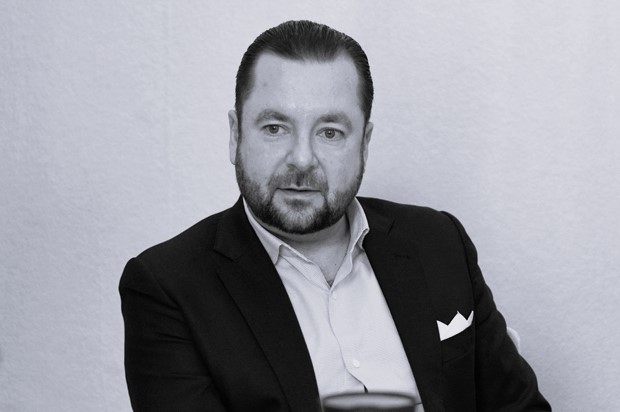
A perspective on industry trends and challenges
Onur Erzan, head of the global client group and head of private wealth at AllianceBernstein, talks about the cyclicality of the asset management business, the importance of size and ESG becoming more politicised.
There are a lot of things currently going on that are keeping asset management professionals busy. There are both longer-term trends such as consolidation and the convergence between traditional and alternative asset managers, as well as more acute developments such as a tougher macro-economic environment and market volatility.
Prior to joining AllianceBernstein last year, Onur Erzan spent 19 years with McKinsey, most recently as a senior partner and co-leader of its wealth and asset management practice, making him well positioned to provide insight on the development of the asset management industry.
“Asset management is a cyclical business by definition,” says Onur Erzan, head of the global client group and head of private wealth at AllianceBernstein, when asked about how he sees the industry developing going forward. However, he sees huge growth potential for asset management over the long term. While he expects the industry to become larger, a smaller number of big players are set to receive most of the assets. “I see some 10 to 15 asset managers having a larger influence,” he comments. He also expects the distinction between traditional and alternative asset managers to disappear.
When it comes to things that keep him awake at night, Onur Erzan highlights geopolitical risks and how ESG is becoming more politicised. This could lead to greater differences between regions. “It’s becoming increasingly difficult to have a unified global investment approach as an asset manager,” he says but adds that together with a tough economic environment and increased uncertainty, this is an opportunity for the best managers to perform.
Asked about the challenges he meets in his current role, he says they are similar to what most investors face, such as increasing interest rates and an uncertain global macro outlook. “Going back to the office is another more managerial challenge that we must handle. We’re a global business and different regions across the world are at different stages of post-Covid recovery. We have to balance the differences and at the same time have fair and equal practices across different offices,” he notes.
Talking about different challenges, Onur Erzan does not see insourcing among institutional investors as a huge challenge. “That’s a trend that comes and goes and it varies between different client segments and also across geographies. Also, with more and more investors including alternative assets in their asset allocation, the need for third-party asset management will only increase,” he says.
In his current role, client service is one area that falls within his remit. Asked if there is such a thing as service alpha, he says that there is a service value that can help with client acquisition or client retention. “If you call it alpha, I would say it’s temporary. The true value of the service you provide is that it can help stabilise the business as you go through more difficult times – if the investment returns that you deliver hit a temporary speed bump,” he says. He adds that maybe the most important aspect of client service is that it can help you broaden existing relationships.
“More and more investors, both institutional and retail intermediaries, are looking to limit the number of partnerships so they can do more things with fewer external partners. The simple reason is that there are friction costs when dealing with an extensive number of third parties,” he says. Furthermore, he notes that as expectations from investors have increased on things such as ESG integration, automated servicing and more real-time responsiveness in terms of portfolio behaviour, it will be harder and harder for smaller managers to deal with that complexity and cost. “For us, service is an enabler of broadening our relationships with top institutions and other clients that you want to grow with,” he explains. The trend of investors and distributors using fewer external partners is one of the reasons for another trend that has been playing out in the asset management industry – consolidation.
“I think that’s one reason as it has been challenging for some asset managers to generate growth,” he says. “Mergers may also be a way to rationalise the cost base and I think that has especially been the case if you look at what’s referred to as mergers of equals. When done right, large M&As can add a lot of value but if you look at the impact on growth, I think the track record has been poor. It’s hard to integrate different teams and if you’re having problems in the underlying investment engine, a merger doesn’t solve the problem. However, targeted acquisitions in areas where it’s hard to build organically makes a lot of sense. They typically don’t disturb the organisation overall and at the same time it helps you to become more relevant as a partner to investors.”
He says that it is difficult to find a magic number for the ideal size of an asset manager. “I think you need to look at revenues rather than assets. You can be a USD 500 billion (EUR 515 billion) passive manager and have insufficient revenues or you can be an alternatives manager with USD 500 billion in assets and be very profitable. AUM metrics are therefore misleading. There are, for example, a lot of sub-USD 300 billion managers and that must be difficult – especially if you’re aiming to be global and compete in a lot of different asset classes. There will, of course, always be successful boutiques with focused strategies but my prediction is that we will have fewer and fewer asset managers below USD 300 billion that strive for a global platform,” he says.
Size also matters when it comes to digitalisation and Onur Erzan believes the industry as a whole still has a long way to go. “It’s trickier on the institutional side. If you look at financial services more broadly, most of the digitalisation has happened on the retail side of the business. When it comes to asset management, we’ve seen most development on the front end with digitalisation of client reporting, client portals etc. However, it’s not only about IT investments. Some of it is also cultural. We’re simply used to doing things in a certain way on the institutional side of the business. It’s also a question of infrastructure. Even if we and other asset managers are willing to digitalise and spend the money, we’re still only one part of a whole chain of things. It’s like a train – the tracks need to be developed as well for a train to go faster,” he says.
(Photo: AllianceBernstein)



